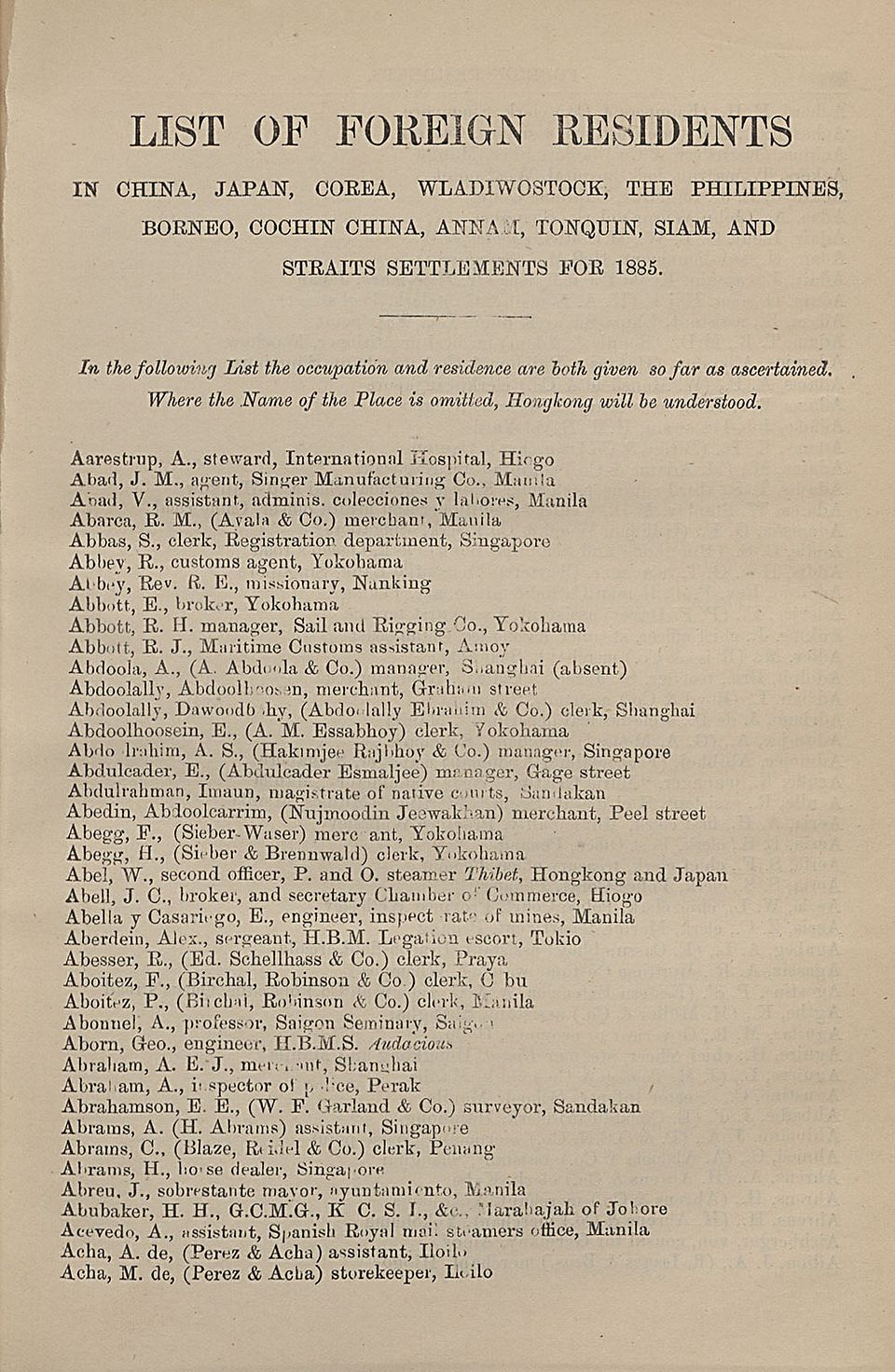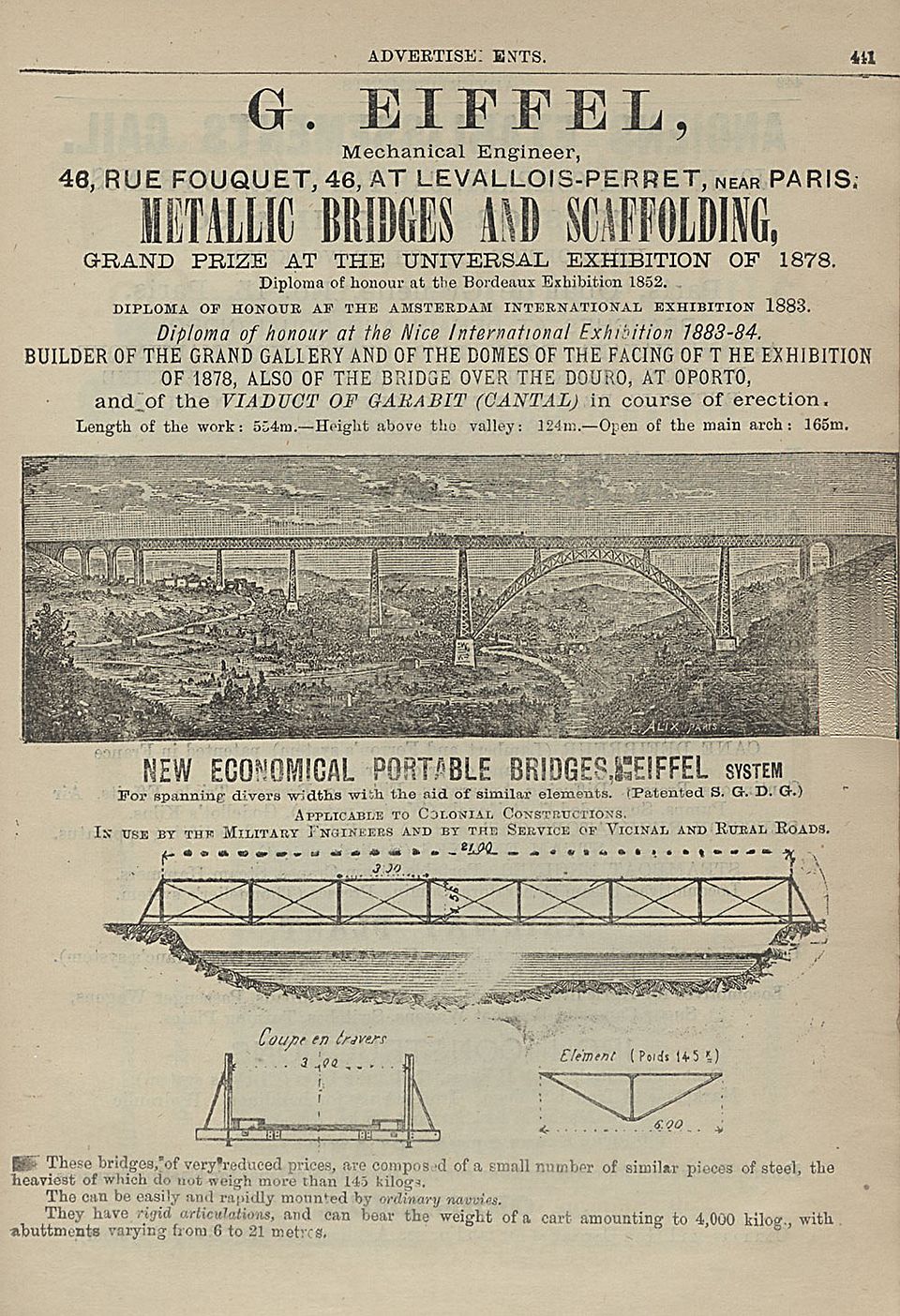Global Information at a Glance: Power, Law, and Commerce through the Lens of Asia Directories
Project Members: Prof. Dr. Madeleine Herren-Oesch, Dr. Cornelia Knab, Eric Decker, Julian Wettengel, Dominique Biehl, Prof. Dr. Peter Cornwell, Prof. Dr. Jean-Pierre Dedieu, Prof. Dr. Christian Henriot, Ina Serif, Michael Offermann
More About the Project:
Activities
Research Network Digital Humanities
In 1937, a book of 2050 pages, called the Directory and Chronicle, aimed to cover all information which was needed by the community of foreigners living in Asia: tables of different weights and measures, currencies and important taxes, local festivity days and traditions, addresses of consulates, lists of foreign residents, and explanations about extraterritorial jurisdiction and courts in charge. It informed about almost every aspect of a global lifestyle in Asia, from the Buddhist association in Hong Kong to the many branches of Christian mission to the Arab and Jewish schools, and from the addresses of insurance companies to the varieties of race and golf clubs. In 1937, the Directory series had already reached its seventy-fifth year of publication, having started in a modest size in 1863.
Analyzing the fabric of information displayed in the Directoryseries during the nineteenth and first half of the twentieth century enables us to understand the development of a global information society. We show how information is used as a raw material which contributed to develop forms of global expertise.
In this project, we use the Directoriesas an analytical lens to understand past, present and future patterns of globalization. The diversity of information listed in the Directories allows to follow research questions alongside an extended timeframe. First of all, the Directoriesprovide responses to the question of who was seen as a foreigner. How did the construction of these groups work? What were their spaces of living in connection with their environments? How does social coherence develop in exterritorial spaces? How do regional and local rules limit specific scopes of actions? Who is responsible for the continuous collection and spread of information? How is the information selected and ordered? Which are the reference points for social stratification and gender-related forms of social coherence? Who are the many intermediaries who directed liaison offices and contracted insurances? And not least:_ what do we actually see when looking through the kaleidoscope of the Directories- an international public sphere, a small elite of business people, or even a form of transcultural “third space”?
Today, the access to the complete set of volumes of the Directoryis limited. This is why so far this valuable source material has not been in the focus of scholarly investigations. Recent theoretical and methodological debates of global history have outlined the significance of approaching empirical evidence of networks and connections cutting across national borders. We suggest to problematize the Directoryas a dictionary of transforming global interferences which substantially supports the development of new methodological and empirical work in global history.
This research project analyzes the development of a global information society in context of the connections of worldwide markets through the lens of the Directoryfor the very first time. With the Directories, the Institute for European Global Studies presents a show case of global studies beyond methodological nationalism and Eurocentrism in a twofold way: by collecting and organizing source material which has until now not been available and which is most relevant for developing new approaches of global history, and by sharing expertise through collaborative and interdisciplinary research. As a digital humanities project, it is integrated in a collaborative research environment working with new digital methods (Link to examples of collaborative research projects).
The information given in the Directory series focuses on the foreigners and their activities and networks in the region. Thus, we argue, with the example of a specific region, it demonstrates the development and transformations of a transculturally entangled world. The research project aims to reveal the social, cultural, political, and economic consequences of global entanglements in multiple local contexts. Across the decades, it reflects the opportunities of worldwide networking, but also the locally palpable conflicts and consequences of entanglement. It thereby intends to present a narrative of global history going methodologically and empirically beyond the relations of great powers and elites: by focusing on the activities of a multiplicity of actors from diverse social backgrounds, we aim to uncover new forms of global interrelations in their local manifestations.



